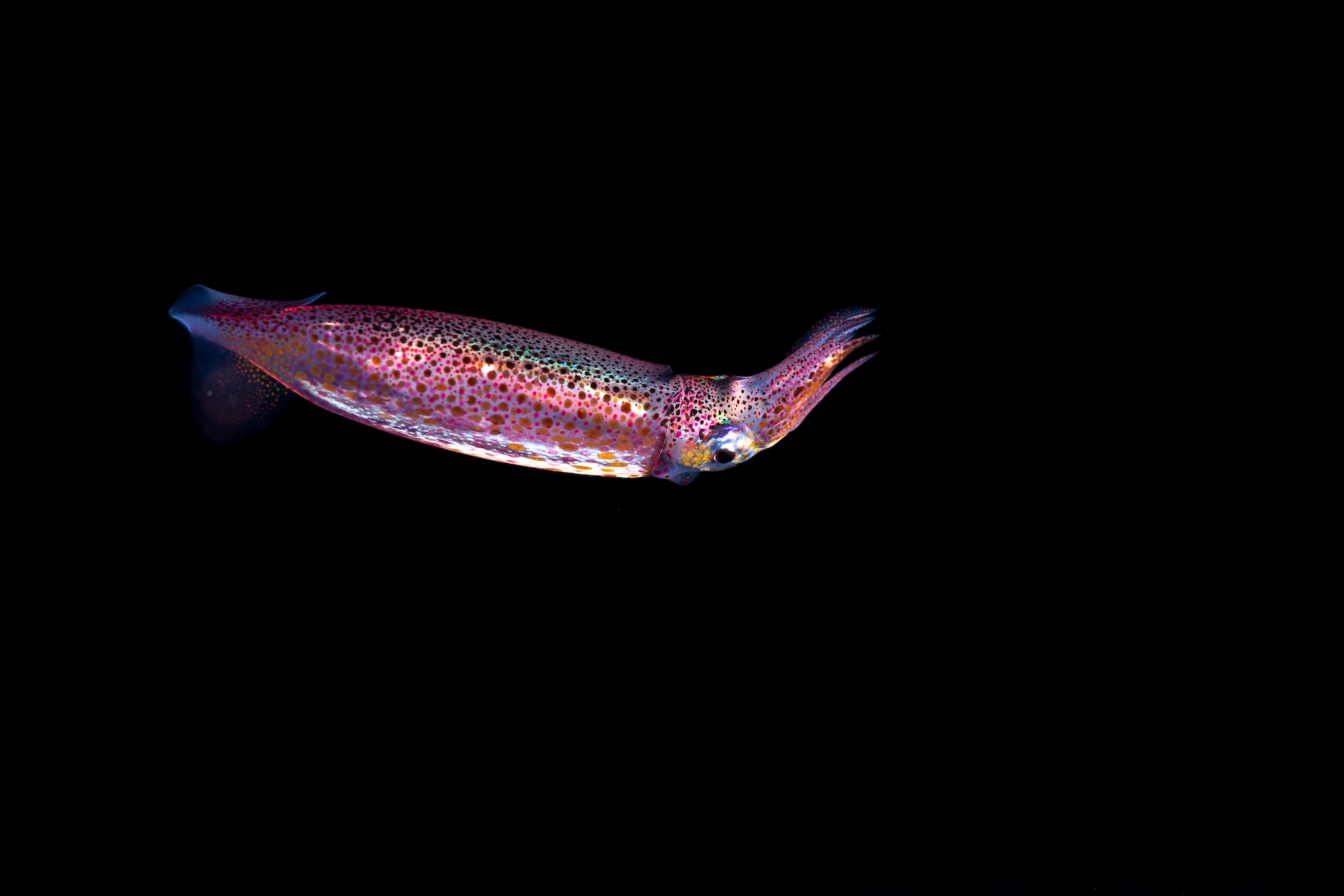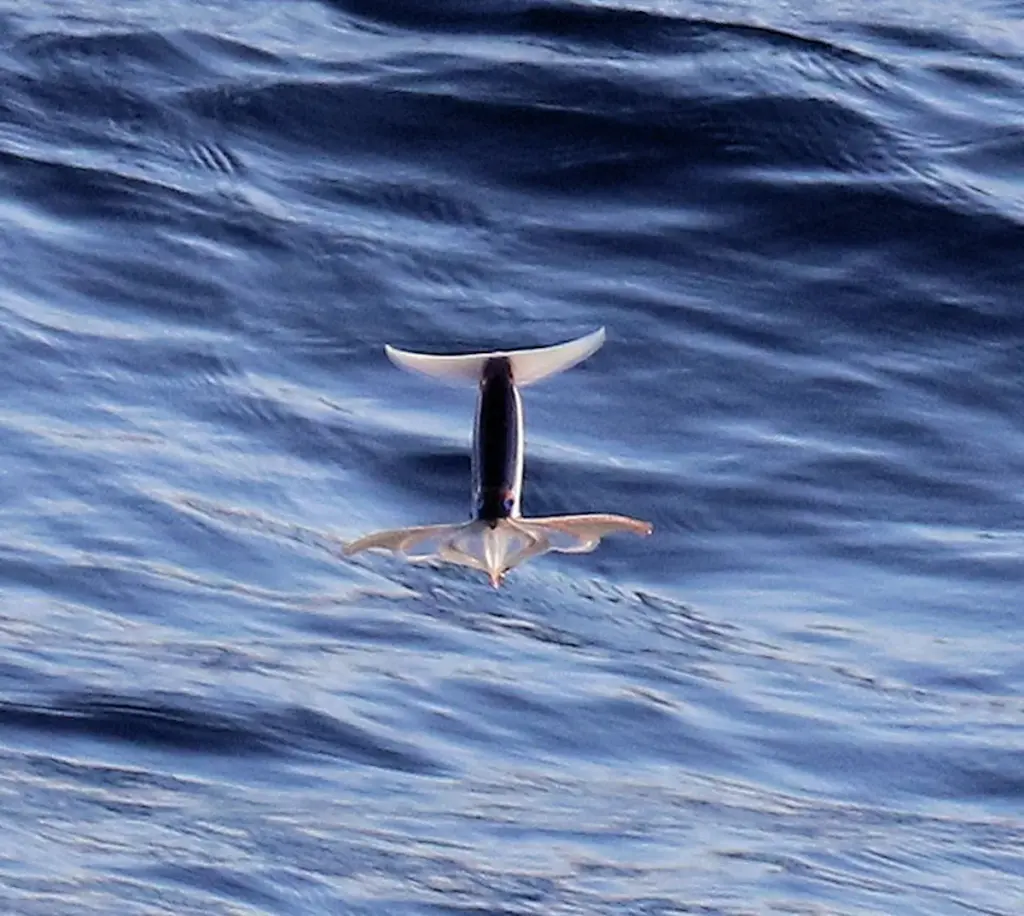What is a Neon Flying Squid?
This squid can really fly

The natural wonders of our world tend to keep us on our toes. Just when we think we’ve seen it all, there’s something new and incredibly remarkable to discover. The ocean is no exception to this status quo. In fact, the ocean has shown us, time and time again, just how truly fascinating, delightfully unique and sometimes strange its inhabitants are. We are thankful to have the opportunity to explore and learn about these amazing ocean animals and bask in their splendor.
Today’s spotlight is on an elusive creature that lives up to its name: the neon flying squid. Now, if you’re imagining squids rocketing into the blue sky and zooming up with the eagles and pelicans, you may be a bit disappointed. But as with most things in life, the real truth tells a much better story.
Get Ocean Updates in Your Inbox
Sign up with your email and never miss an update.
Dive in (or take flight) as we explore all about the amazing neon flying squid!
It’s a bird, It’s a plane, It’s a … neon flying squid?
The neon flying squid (Ommastrephes bartramii) also goes by a couple of common names including red squid and red flying squid. (I’m partial to its original name since it sounds the coolest.) These creatures are typically found in subtropical and temperate waters of the Atlantic, Pacific and Indian oceans.
Neon flying squid are equipped with eight arms and two feeding tentacles that look similar to their arms. Flying squid have a strong mantle, which is the main part of the squid’s body that covers and protects its internal organs. They are typically between a red and mauve color and range in size from about 30 cm for males and up to 55 cm for females (about a foot for males and a foot and 9 inches for females). Most noticeably, this squid also features a broad silvery band of coloring which might be where it gets the “neon” part of its name.

As for the day in the life of a neon flying squid, these animals are vertical migrants, meaning they move up and down the depths of the ocean throughout the day. As a result, they typically like to stay under the radar during the day. Diving to depths of up to 400 meters, the neon flying squid roams the mesopelagic zone, more commonly known as the twilight zone, in daylight hours. In this zone of the ocean, light is scarce and only barely penetrates through the darkness.
At night, the flying squid will gather near the water’s surface and feed on fish, other squid and crustaceans. The neon flying squid is a migratory species and despite its short lifespan of about one year, this squid is always on the move in a cyclical pattern for feeding and spawning. Neon flying squid are opportunistic feeders and typically travel in large groups to feed while protecting themselves from predators. Flying squid are prey for a large variety of sea creatures including sharks, dolphins, seals, tuna, swordfish and other marine mammals. Now that’s a lot of predators to look out for.
So, the big question: When do neon flying fish fly?
As you may have guessed, neon squid travel in large groups at the surface of the water, and that is where all the flying magic happens. Flight is a skill attributed to smaller neon flying squid when they reach a certain maturity in adulthood but before they grow too large. Once they grow past a certain size, flying becomes more difficult yet not impossible. This ability is thought to help them evade predators as they move together. This squid can be airborne for about 10 to 20 meters before landing back into the ocean. This is truly an amazing and rare sight.
Neon flying squid with their unique abilities are just one piece of the enormously large and mysterious puzzle that is our ocean. There are still so many pieces to discover and explore. Join Ocean Conservancy as we dive deep and fly high towards a healthier ocean for us all. We can’t do it without your support. Take action today to help Ocean Conservancy protect the ocean and every unique creature that calls it home.